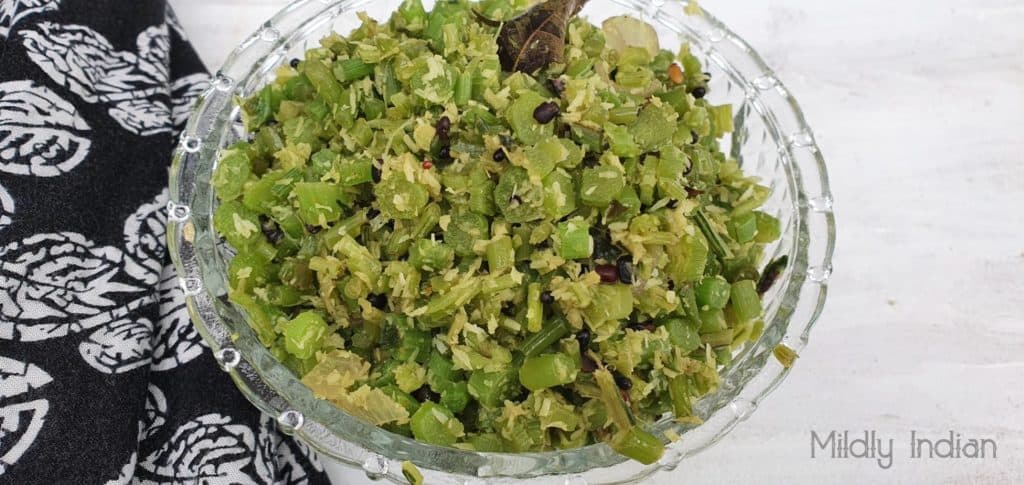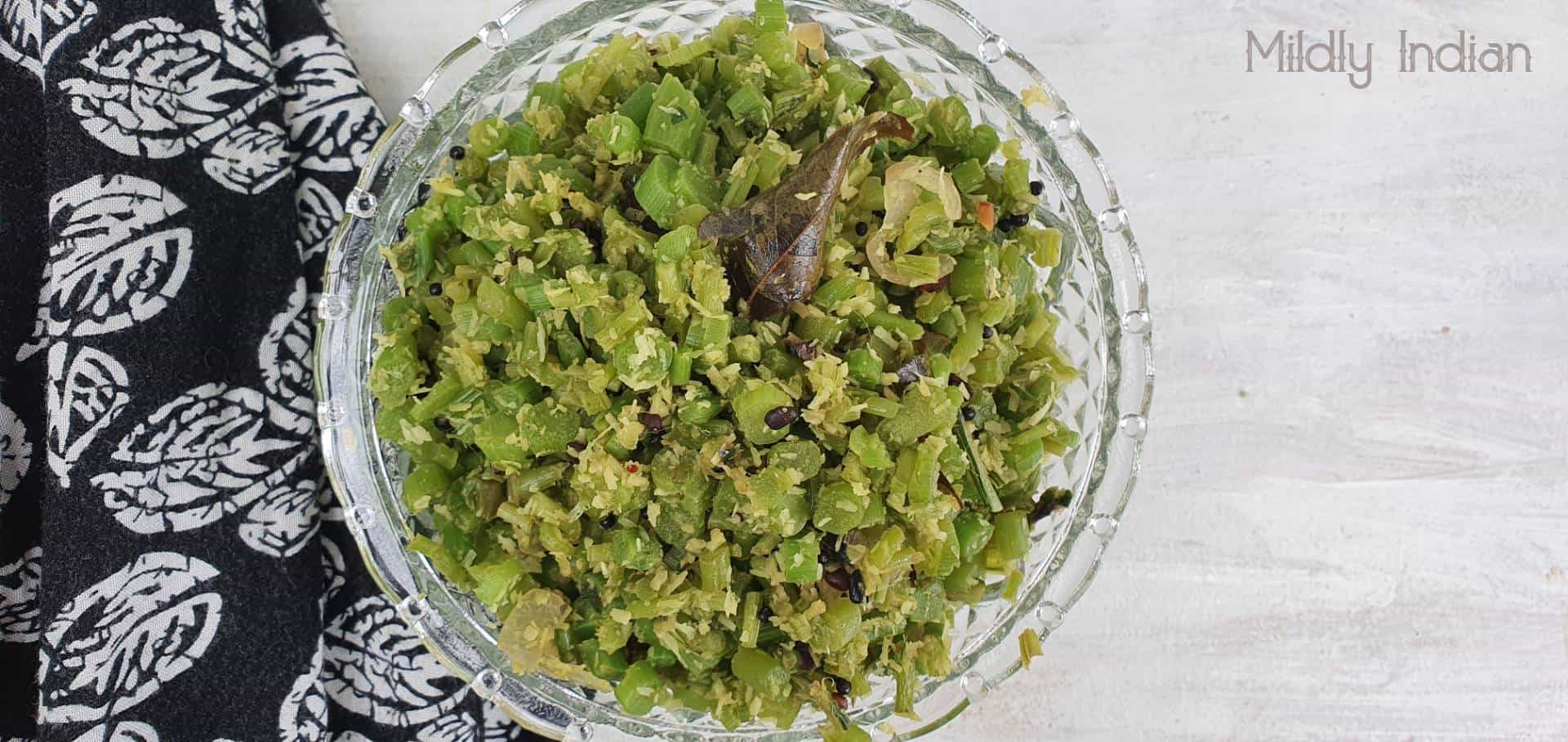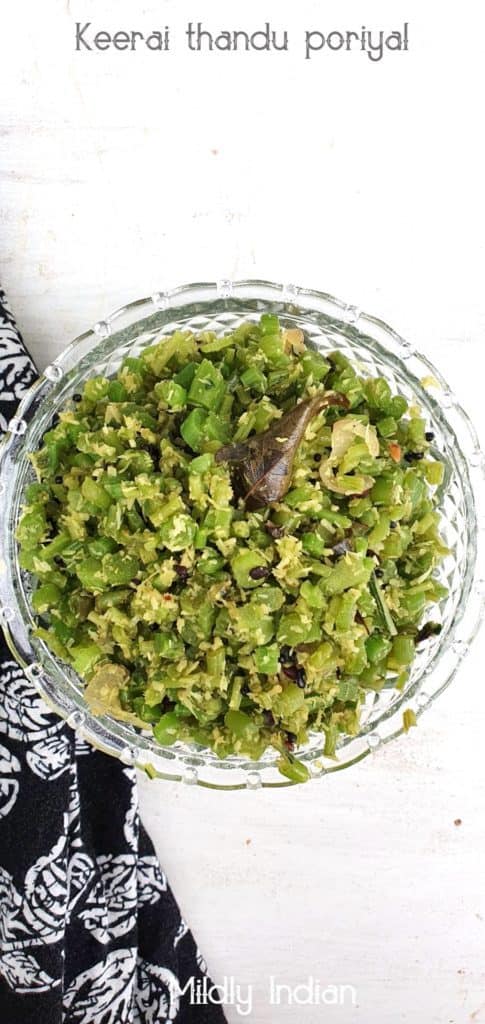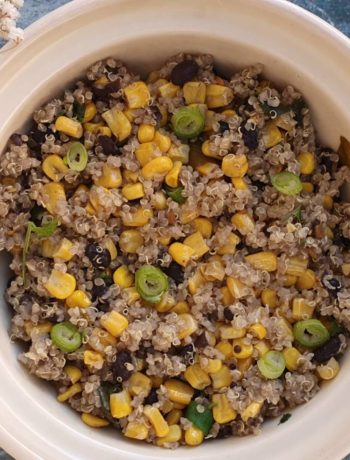During this lockdown time, I am sure we all looked at our stocks of fresh produce and said is there a way I can use this too? Or ask how can I stretch this s bit more, just to make stocks last a bit longer. This is the time we gave that keerai thandu a serious look than tossing it.
Amaranthus at my parents
My parents have a large terrace garden which they have pretty much scaled-down as per what they can maintain now with their ages advancing. But for all the years, sprouting that amaranth seed and growing that batch of amaranth has never stopped. Micro amaranth greens to the mature plant, they all get cooked and added to the meal. The batches also vary depending on the seeds they have. The red leaf ones, the green thick-stemmed ones, the arakeerai, the variegated ones, they all had their own recipes in mum’s kitchen. The red and green amaranth gets used up in thoran, arakeerai in keerai molagutal and variegated one in kootu.

Mums keerai thandu recipes
Being homegrown, the stems from these greens were as valuable as the leaves. Dad is so fond of those keerai kuchis, they are a staple for him. In no way they get tossed unless really inedible. The amarnath stems get are classified into the stubborn stems or the keerai kuchis ( ends up in sambhar) and the tender one. The stubborn ones go in the gravy replacing drumsticks and the tender ones get finely chopped up.
Mum does have an amazing knack when it comes to making the ordinary keerai feel so different each day. That thinly sliced keerai thandu gets reformed as poriyal. This is her recipe that I am sharing today for the tender amaranth stems.
Why did I think of it now?
Getting a handful of fresh greens is becoming a difficulty now and the tiny backyard gardens we keep are quite insufficient to supply us with the greens. So, every bit we get is so valuable and makes me think of these keerai thandu recipes and bring it forth. Once you start a small patch of red or green amaranth you will love to use every part that you can save too. If you have cauliflower stems, broccoli stems, or any other tender stem, you can use this same recipe. Mince them fine and stirfry them.

Keerai thandu poriyal
Ingredients
the vegetable needed
- 1 bunch amaranthus greens (save the stems)
for tempering
- 1 tsp coconut oil ( use any cooking oil you use)
- 1/4 tsp mustard seeds
- 1/4 tsp Urad Dal
- 1/4 tsp cumin seeds
- 1-2 dry red chillies
- 5-8 curry leaves
- 1-2 shallots ( sliced thin)
- 1 pinch turmeric powder
- salt to taste
- 1/2 cup drinking water ( use as needed)
for garnishing
- 3 tbsp grated coconut
Instructions
- Clean out the leaves of the amaranthus bunch ( large bunch) and remove the stalks.
- Snap the tender portion off the sturdier stalks. Save the sturdier portion and read the post above how to use it.
- String the outer fibres of the tender portion. Wash the stalks and clean them.
- Slice them thin and keep aside
- Heat a pan ( wok or kadai) and add the oil, mustard seeds, urad dal and cumin seeds and allow them to sizzle

- Add the thinly sliced shallots, curry leaves and red chilli and saute till the shallots are golden.
- Now add the stem sliced and saute.
- Sprinkle water to make it moist, add salt, turmeric and cover and steam till the stalk is tender. takes about 4-6 minutes

- Add the grated coconut, saute well.
- once the cooking liquid is all dry, it is ready to serve.

Notes
Serving the keerai thandu poriyal
The keerai thandu poriyal with thalagam kozhambu and rice is a wonderful combination. The poriyal with payaru kanji is a lighter meal to have. Pair it in the Indian thali meal or even as a roll-up with a flatbread. The coconut flavoured amaranth stem stirfry is certainly a must-try.
Collaborations.
During the lockdown period, We had a much more serious evaluation of using limited resources in a better way. This post was written during that time with limited content. Right now, with a bot more time at hand, the recipe seems perfect to be redone. Thanks to the prompt from the Foodies redoing old post, the content is now updated.

Stay connected
There are many more ways you can use the stems of various vegetables. If you love to share them, we are all ears. Tag us @mildlyindian or #mildlyindian with your version of these recipes on all your social media accounts.
Don’t forget to Pin the recipe for later.

See you at the next post and stay safe.





Seema, from a young age, was told not to use the thick stems of amaranth. What a wonderful way not to waste these nutritious stalks. And also like your suggestion of stripping the fibrous bit. Your keerai thandu poriyal looks so delicious.
What a delicious way to use something which we discard. I love such recipes, reminds me that we waste so much when we can use that. I am going to try this soon, thanks for sharing a lost recipe
Seema, I think our moms would have got along famously. Mine used to peel and cook the stems and add curds to make lovely raita.
But seriously I think the Amarnath stem sabzi is something we should treasure. We speak so much about minimizing waste our forefathers did it. Love this stir-fry and will try it with the next batch of greens.
I am sure the love for homegrown produce and flavours would have worked well for both our mums. I am glad we have a portal to save these for the ones interested atleast. Please let me know how you like it when you tried it. I am surely going to test out the raita idea.
the “thandu” from the keerai is truly precious. I only have access to methi and spinach thru the year, so I go crazy when I see thandu keerai in the market (esp the red variety). and yes the same classification at. home too – tender leaves for karumadhu, stiff stalks for sambar and tender stalks for poriyal . our elders definitely were (are) so indigenous !
I like to use amaranth leaves in our daily cooking. This is similar to what we cook, it’s tasty and makes a good accompaniment.